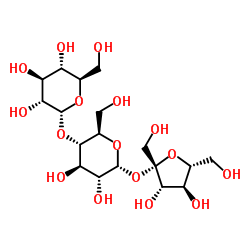Sugar feeding by the aphid parasitoid Binodoxys communis: how does honeydew compare with other sugar sources?
Kris A G Wyckhuys, Jessica E Strange-George, Chris A Kulhanek, Felix L Wäckers, George E Heimpel
文献索引:J. Insect Physiol. 54 , 481-491, (2008)
全文:HTML全文
摘要
Parasitoids commonly forage in agricultural settings where the predominant sugar source is homopteran honeydew. The aphidiine braconid, Binodoxys communis, is an Asian parasitoid currently being released against the soybean aphid, Aphis glycines, in North American soybean fields. We conducted a number of laboratory experiments evaluating the quality of A. glycines honeydew as a sugar source for this parasitoid. Wasps readily fed on droplets of A. glycines honeydew, honey and 50% sucrose solution, but the length of feeding bouts on honey was significantly longer than on the other foods. Parasitoids lived significantly longer when fed honey or sucrose than honeydew, while starved wasps had the shortest lifespan. At 21+/-1 degrees C and 25+/-5% R.H., male B. communis that were fed honey lived for a maximum of 14 days, while females lived up to 20 days. Honeydew-fed wasps of both sexes lived approximately 3 days on average, which was 2-3 times longer than when they were only allowed access to water. Anthrone tests of whole insects showed that total sugar and glycogen levels of honey or sucrose-fed individuals were consistently higher than those fed honeydew or water. The glycogen levels of honeydew-fed wasps increased significantly after one day of feeding. HPLC analyses revealed that B. communis readily assimilates A. glycines honeydew oligosaccharides such as erlose, while others (e.g., raffinose) did not degenerate. Raffinose was present in much higher amounts in honeydew-fed wasps than in wasps fed other diets, so this sugar could be used as a 'signature' sugar for this species. Honeydew-fed wasps also had significantly lower fructose/(fructose+glucose) ratios than those from other diet treatments. Although A. glycines honeydew might be the main carbohydrate source within a soybean field, other sugar sources such as floral nectar appear to be more optimal foods for B. communis from a physiological standpoint. We discuss the results from the perspective of classical biological control of the soybean aphid in North America.
相关化合物
| 结构式 | 名称/CAS号 | 分子式 | 全部文献 |
|---|---|---|---|
 |
吡喃葡糖基蔗糖
CAS:13101-54-7 |
C18H32O16 |
|
Simple column-switching ion chromatography method for determ...
2016-03-01 [Food Chem. 194 , 555-60, (2015)] |
|
Sugar composition of French royal jelly for comparison with ...
2012-09-15 [Food Chem. 134(2) , 1025-9, (2012)] |
|
NMR characterization of saccharides in Italian honeys of dif...
2012-05-09 [J. Agric. Food Chem. 60(18) , 4526-34, (2012)] |
|
Honeydew feeding in the solitary beeOsmia bicornisas affecte...
2009-01-01 [J. Insect Physiol. 55 , 1158-1166, (2009)] |
|
Different food sources affect the gustatory response of Anap...
2003-05-01 [J. Chem. Ecol. 29 , 1203-1222, (2003)] |